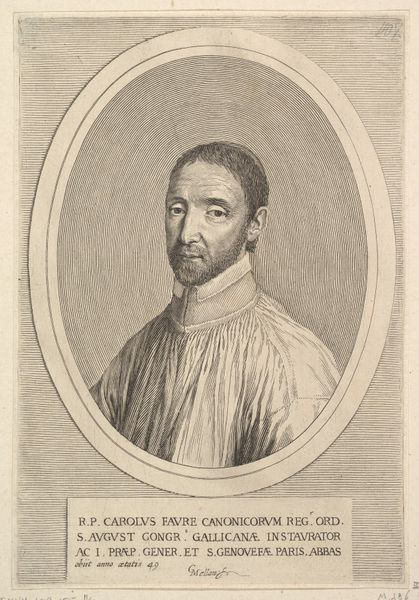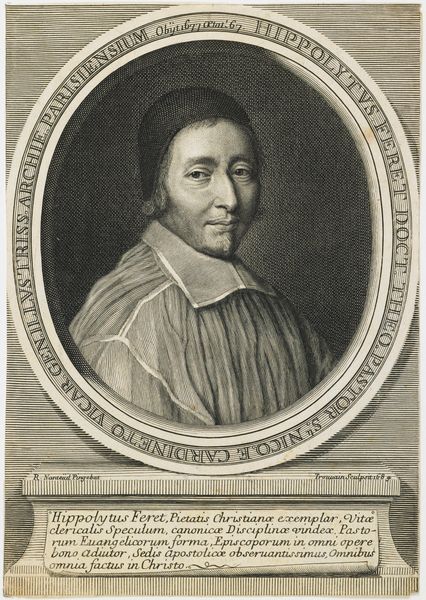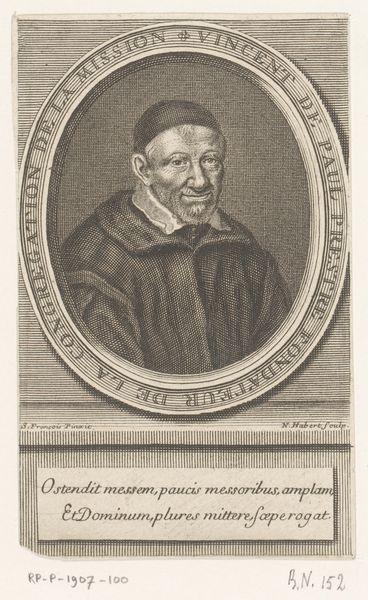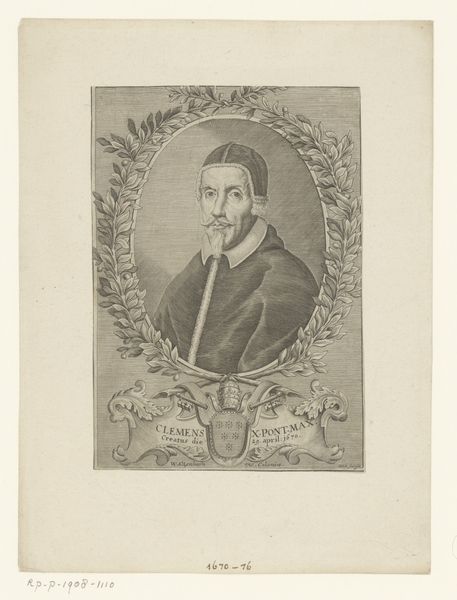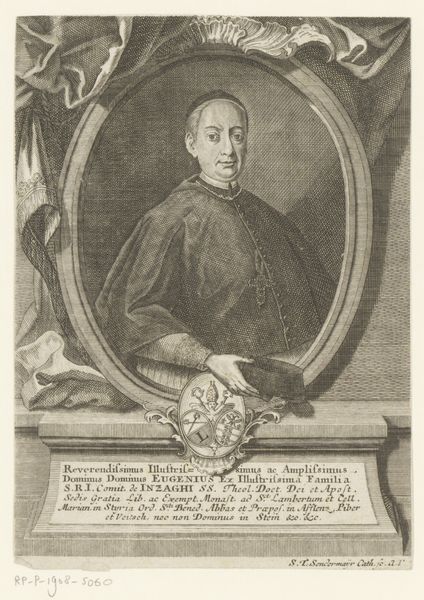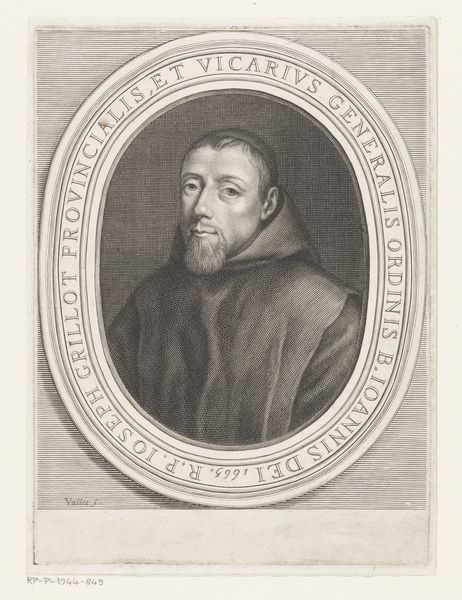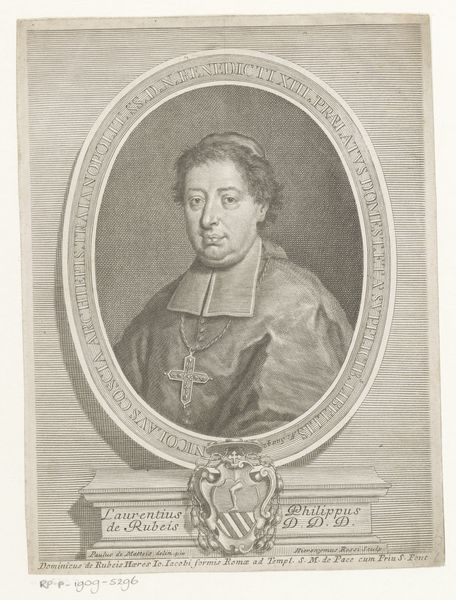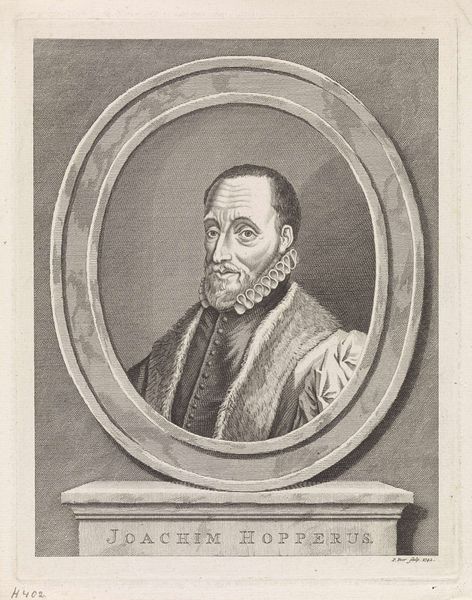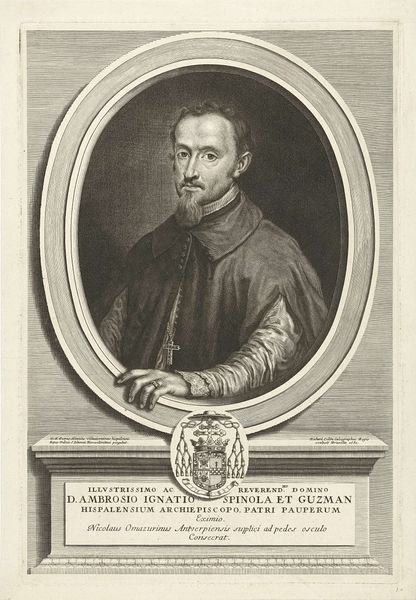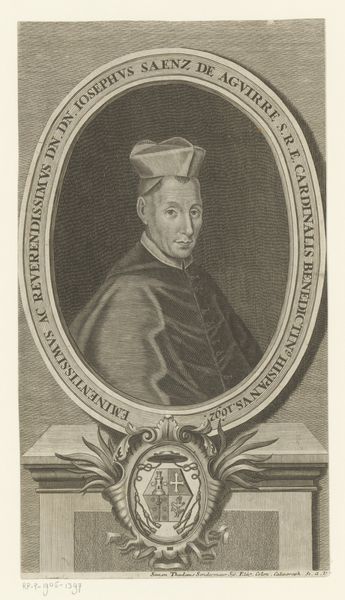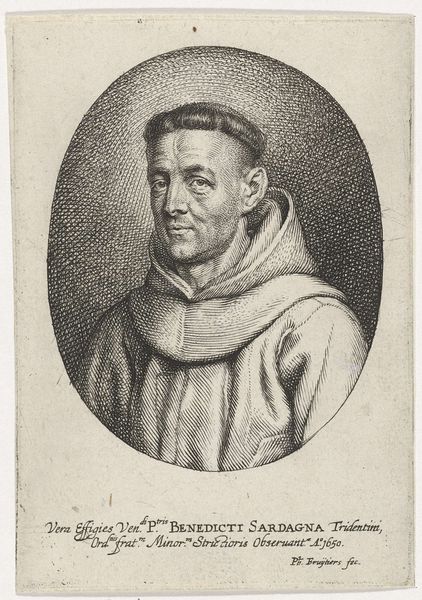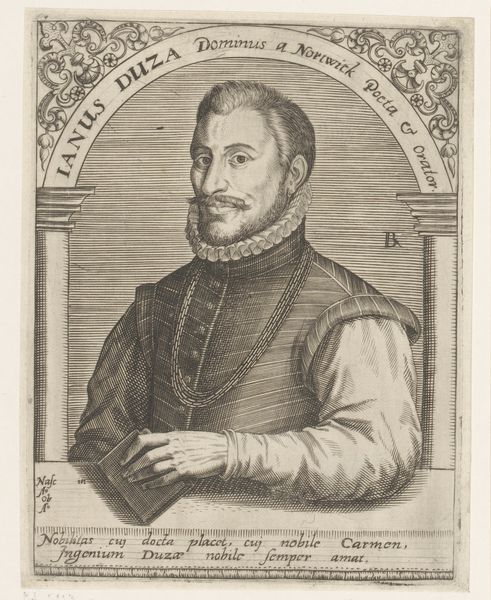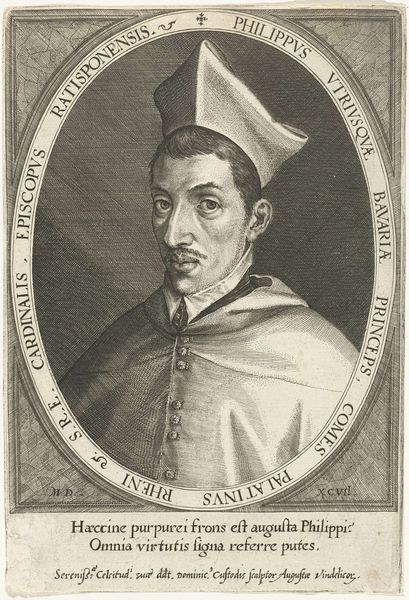
drawing, print, engraving
#
portrait
#
drawing
#
baroque
# print
#
portrait reference
#
engraving
Dimensions: Sheet: 4 3/4 × 3 5/16 in. (12.1 × 8.4 cm)
Copyright: Public Domain
Editor: This engraving, "Charles Faure" by Robert Nanteuil, dates from somewhere between 1643 and 1653. The precision of the lines creating light and shadow are impressive, but the oval portrait shape feels very formal and somewhat distant. What symbolic elements are at play here? Curator: That distance, I think, is crucial. Nanteuil, a master of his era, uses this formality to convey not just likeness, but the sitter’s station and symbolic role. Faure, as the inscription tells us, was a Canon, Abbot, and restorer of the Gallican congregation. Editor: So, the text below the portrait contributes significantly to its meaning? Curator: Absolutely! The inscription acts as a key, unlocking Faure’s identity. Notice how the lines of his clothing are simple, almost austere. It reinforces his piety. The gaze, though, is direct. Editor: It’s not as severe as I initially perceived, now that you point it out. There's almost a hint of a smile? Curator: Precisely! It suggests not just authority but also a certain benevolence. And look closer at the oval frame. Doesn’t it remind you of a religious medallion or perhaps even a halo? Editor: I see what you mean! It's subtle, but definitely elevates the subject. Are there other details that would escape a modern viewer? Curator: Certainly the Latin inscription, in itself, signifies the status and power of the Church during that time. Also, consider the act of creating a print - this image could have been circulated widely, spreading Faure's influence even further. It’s a piece of propaganda as well as art. Editor: I hadn't considered the power of reproduction then! Thank you; it definitely changed the way I look at this. Curator: My pleasure. The symbolism embedded within these portraits tells powerful stories about cultural memory and religious continuity.
Comments
No comments
Be the first to comment and join the conversation on the ultimate creative platform.
